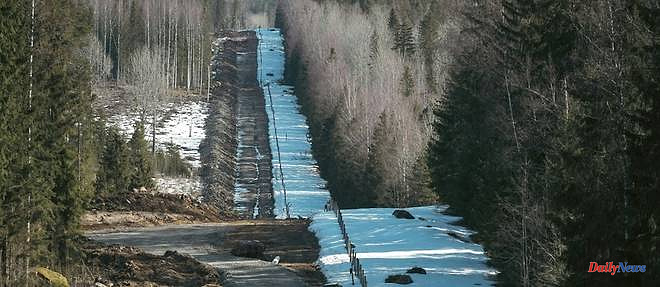The Finnish border guards revealed on Friday the route of the site of the future iron curtain which will cover part of its immense border of 1,340 kilometers with Russia, a consequence of the war in Ukraine.
The military unit gave the press a tour of the construction site of the first three-kilometre pilot section on the border, near Imatra in the south-east of the country, a few days after Finland joined NATO .
A total of 200 kilometers of barbed wire fences, three meters high and bordered by a road, will be erected, for a planned budget of 380 million euros.
Most (70%) will be on the south-eastern border, the densest of the border line with Russia, according to a still incomplete route presented on Friday.
But other fences will be erected further north, on the long, largely uninhabited border up towards Lapland and the Norwegian border in the Arctic.
"There will be several dozen sections for the fence. The typical example will be the border crossings and their surroundings, the roads crossing the border, but also the areas easily accessible for the man in transport", explained the general of Jari Tolppanen brigade during a press briefing.
Currently on the pilot site, located six kilometers from Imatra, the backhoe loaders are busy clearing and the trees have been felled, but the fence itself is not yet in place.
The construction site began at the end of February and the last phase of the erection of the fence must be completed in 2026.
Some 70 kilometers are to be completed by 2025.
Finland's borders are currently mainly secured by light wooden barriers, mainly designed to prevent livestock from moving.
This was also the case even during the Cold War, when the Nordic country was forced into neutrality by Moscow after the Second World War.
The southeastern border had been drawn in 1940 and then formalized in 1947 after the annexation of a large part of Finnish Karelia by the USSR, which had led to the displacement of hundreds of thousands of inhabitants. She had remained very sparsely equipped since then.
Three decades after the end of the Cold War, Helsinki took the decision last year to erect a fence after the invasion of Ukraine. The authorities presented it as a way of avoiding the instrumentalization of migratory flows, as recently in Belarus, but without a military function.
"It's the only effective and safe way to control large-scale entries," said General Tolppanen. "We need to reduce our reliance on effective control on the Russian side of the border," he said.
This new iron curtain marks the end of a period when the border region of Finland relied on trade with Russia to ensure its prosperity.
Most people say their country is turning its back on its powerful neighbour, but opinions are more divided on the usefulness of the fence.
"I think it's a very good thing," Sinikka Rautsiala, a resident of Imatra, told AFP. "We should have built it a long time ago".
"I don't think it is very necessary," said Pirjo Pänkäläinen, another resident of the town of 25,000 inhabitants. "But certainly, as there is a lot of fear caused by the situation, a lot of people think it is important to build it."
14/04/2023 16:37:10 - Imatra (Finland) (AFP) - © 2023 AFP












